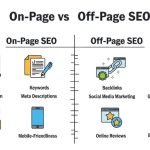
Getting your website to rank higher on Google can feel like solving a puzzle with constantly changing pieces. One day your page sits comfortably on the first page, and the next it’s nowhere to be found. The good news? Search engine optimization isn’t magic—it’s a systematic approach that anyone can learn and implement.
Understanding How Google Rankings Work

Google’s algorithm evaluates websites using hundreds of ranking factors, but three core principles drive most ranking decisions: relevance, authority, and user experience. When someone searches for information, Google aims to deliver the most helpful, trustworthy results that directly answer their query.
Relevance means your content actually addresses what people are searching for. Authority reflects how much Google trusts your website based on factors like backlinks from reputable sources and your site’s overall credibility. User experience encompasses everything from how fast your pages load to whether visitors stay engaged with your content.
Understanding these fundamentals helps you make strategic decisions about where to focus your SEO efforts. Rather than chasing every possible optimization, you can prioritize changes that align with what Google values most.
Keyword Research That Drives Results
Effective keyword research forms the foundation of successful SEO. Start by identifying terms your target audience actually uses when searching for your products, services, or information. Tools like Google Keyword Planner, Ahrefs, or SEMrush can reveal search volumes and competition levels, but don’t overlook simpler approaches.
Check Google’s autocomplete suggestions by typing relevant terms into the search bar. Look at the “People also ask” section and related searches at the bottom of results pages. These features show you exactly what real users are searching for.
Focus on finding a mix of keywords with different search volumes. High-volume terms might bring more traffic, but they’re usually more competitive. Long-tail keywords—specific phrases like “best running shoes for flat feet”—often convert better because they capture people with clear intent.
Once you’ve identified your target keywords, create a content plan that naturally incorporates them. Avoid keyword stuffing, which can actually hurt your rankings. Instead, use keywords strategically in your page titles, headings, and throughout your content where they fit naturally.
Creating Content That Ranks and Converts
Quality content remains one of the strongest ranking factors. Google rewards pages that comprehensively answer users’ questions and provide genuine value. This means going beyond basic information to offer unique insights, practical advice, or detailed explanations that visitors can’t find elsewhere.
Structure your content for both readers and search engines. Use clear headings (H1, H2, H3) that incorporate your target keywords naturally. Break up long paragraphs with bullet points, numbered lists, and subheadings that make your content easy to scan.
Answer questions thoroughly but concisely. Many successful pages target featured snippets—those highlighted answers that appear at the top of search results—by providing direct, well-formatted responses to common questions in their field.
Update your content regularly to keep it fresh and accurate. Google tends to favor recently updated pages, especially for topics where information changes frequently. Set up a schedule to review and refresh your most important pages every few months.
Technical SEO Fundamentals
Technical SEO ensures search engines can properly crawl, index, and understand your website. Start with page speed, which directly impacts both rankings and user experience. Use Google’s PageSpeed Insights to identify specific improvements, such as optimizing images, reducing server response times, or minimizing JavaScript.
Make sure your website works flawlessly on mobile devices. Google uses mobile-first indexing, meaning it primarily uses the mobile version of your content for ranking. Test your pages on different screen sizes and fix any issues with layout, navigation, or loading speed.
Create and submit an XML sitemap to Google Search Console. This file helps search engines discover and index all your important pages. Regularly check Search Console for crawl errors, security issues, or indexing problems that could hurt your rankings.
Implement proper URL structure using descriptive, keyword-rich URLs that clearly indicate what each page contains. Avoid long strings of numbers or random characters that don’t provide context about your content.
Building Authority Through Link Building
Backlinks—links from other websites to yours—signal to Google that your content is valuable and trustworthy. Focus on earning high-quality links from reputable sites in your industry rather than pursuing large quantities of low-quality links.
Create link-worthy content that other websites naturally want to reference. This might include original research, comprehensive guides, useful tools, or unique insights that add value to industry discussions. Infographics, case studies, and data-driven articles often attract natural backlinks.
Reach out to other website owners, bloggers, or journalists who might find your content valuable. Personalize your outreach emails and explain specifically why your content would benefit their audience. Build genuine relationships rather than sending generic link requests.
Monitor your competitor’s backlinks to identify potential opportunities. If other sites in your industry are linking to your competitors, they might also be interested in your content if it provides additional value.
Measuring and Improving Your SEO Performance

Track your progress using Google Analytics and Google Search Console to understand which strategies are working. Monitor key metrics like organic traffic, keyword rankings, click-through rates, and conversion rates from organic search.
Set up goal tracking to measure how SEO traffic converts into leads, sales, or other desired actions. This data helps you focus on keywords and content types that drive business results, not just traffic.
Analyze your top-performing pages to understand what makes them successful, then apply those lessons to other content. Look for patterns in topics, content length, keyword usage, or formatting that correlate with higher rankings.
Stay updated on SEO best practices and algorithm changes by following reputable industry sources. Google regularly updates its algorithm, and staying informed helps you adapt your strategy to maintain and improve your rankings.
Your Path to Better Google Rankings
Ranking higher on Google requires consistent effort across multiple areas—from creating valuable content to optimizing technical elements that search engines need to understand your site. Success doesn’t happen overnight, but implementing these strategies systematically will improve your visibility and attract more qualified traffic to your website.
Start with the fundamentals: conduct thorough keyword research, create comprehensive content that serves your audience, and ensure your website provides an excellent user experience. As you build momentum, expand into more advanced tactics like link building and technical optimizations.
Remember that SEO is a long-term investment. Focus on sustainable practices that build lasting authority rather than shortcuts that might provide temporary gains but risk penalties. By consistently providing value to your audience and following search engine best practices, you’ll see steady improvements in your Google rankings and organic traffic growth.


















No Comments